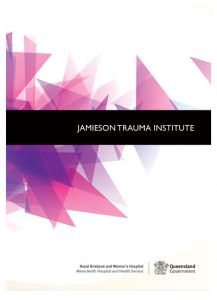About us
Jamieson Trauma Institute is re-conceptualising how trauma services are delivered.
The establishment of JTI was announced in November 2017. Designed to be a state-wide quality improvement facility based heavily on collaboration and partnerships, JTI is striving to advance trauma prevention, research, systems, and clinical management to deliver the best possible care.
A strong partnership has been established with the Motor Accident Insurance Commission and Queensland University of Technology. JTI holds strong relationships with various health and university partners including Clinical Skills Development Centre, QIMR Berghofer, Brisbane Diamantina Health Partners, Herston Biofabrication Institute, Surgical Treatment and Rehabilitation Service (STARS), Statewide Trauma Clinical Network, Queensland Ambulance Service and Retrieval Services Queensland.
While contributing to national and international evidence, the institute plays a key role in determining unique solutions to the unique challenges in trauma care facing Queensland.
With Royal Brisbane and Women’s Hospital (RBWH) internationally recognised as a leading trauma and burns hospital, strongly tied to the Australian Defence Force and boasting extensive research and education capacity; RBWH is a perfect fit for a institute dedicated to furthering trauma research and outcomes.
Key Themes

JTI Overview
The Jamieson Trauma Institute represents a unique collaboration of service partners, striving to advance trauma prevention, research, systems, and
clinical management, with the overall aim of delivering the best possible care to people suffering traumatic injuries, whether they are treated at Royal
Brisbane and Women’s Hospital, or other trauma centres across Queensland and Australia
Jamieson Trauma Institute
Level 13, Block 7
Royal Brisbane and Women’s Hospital
HERSTON QLD 4029
Email: Jamieson_Trauma_
Institute@health.qld.gov.au
News
Newsletter – November 2025
If we thought September was a busy month for the JTI team, October seemed to be over in a blink of an eye! On Friday 17th, we joined forces with the RBWH Trauma Service, P.A.R.T.Y, Queensland Trauma Education (QTE), Teamwork and Collaborative Training (TACT) and reps from Acumed for World Trauma Day. We also highlight the achievements of the team at the Trauma 2025 Conference in Wellington, New Zealand.


